
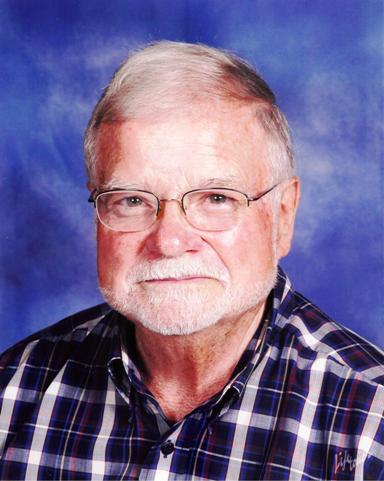


|
Thought for the month:
to leave us that way................Leighton Ford |
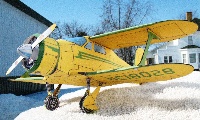 Click pic to view larger CardStock model: The Beachcraft-Staggerwing Very few pre-war biplanes had enclosed cabins and fewer still had a retractable undercarriage; the four-seater Beech-17 'Staggerwing' had both. It was something of a misnomer as many biplanes had upper and lower wings staggered but the Beech reversed the usual layout by staggering the upper pair behind the lower. |
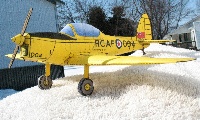 Click pic to view larger CardStock model: Chipmunk The de Havilland Canada DHC-1 Chipmunk was designed to succeed de havilland's Classic Tiger Moth biplane trainer. Flying for the first time at Downsview, Toronto on 22 May 1946, the tandem-seat stressed-skin monoplane was the first indigenous design of de Havilland Aircraft of Canada Ltd. The prototype, put through its paces by Pat Fillingham from the parent company at Hatfield, was powered by a 108-kW (145hpl de Havilland Gipsy Major 1C. Chipmunks built to the prototype's specification were designated DHC-1B-1, while those with a Gipsy Major 10-3 were designated DHC-1B-2. Most Canadian-built Chipmunks had a bubble canopy. |
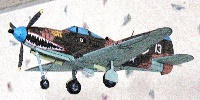 Click pic to view larger CardStock model: The Bell P-39 Airacobra The P-39 was one of the principal American fighter aircraft in service at the start of World War II. Although its mid-engine placement was innovative, the P-39 design was handicapped by the lack of an efficient turbo-supercharger, limiting it to low-altitude work. The P-39 was used with great success by the Soviet Air Force |
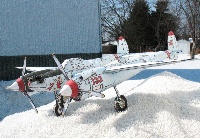 Click pic to view larger CardStock model: P-38 Lightning The US heavy hitter in the WWII Pacific Theater. With drop tanks under its wings,the P-38 was used most successfully in the Pacific Theater of Operations and the China-Burma-India Theater of Operations where it enabled two airmen to achieve the highest-ever per pilot tally of American aerial victories. |
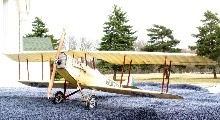 Click pic to view larger CardStock model: Curtiss Jenny The JN-2, deficient in performance, particularly climbing, was an equal-span biplane with ailerons controlled by a shoulder yoke located in the aft cockpit. The improved JN-3 incorporated unequal spans with ailerons only on the upper wings, controlled by a wheel. |
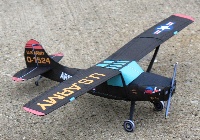 Click pic to view larger CardStock model: The Cessna L-19/O-1 Bird Dog The Bird Dog is a liaison and observation aircraft. It was the first all metal fixed wing aircraft ordered for and by the United States Army since the U.S. Army Air Forces separated from the Army in 1947, becoming its own branch of service, the U.S. Air Force. The Bird Dog had a lengthy career in the U.S. military as well as in other countries. |
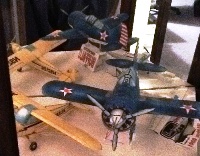 Click pic to view larger CardStock model: F2A Brewster Buffalo In 1935 U.S. Navy laid down specifications for a replacement for the Grumman F3F biplane equipping its four carriers. Brewster Aeronautical Corporation developed a design for a modern monoplane fighter with an enclosed cabin and retractable landing gear |
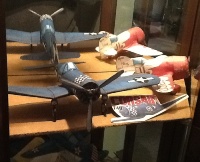 Click pic to view larger CardStock model: The Vought F4U Corsair At first, it was unable to land on a carrier but with precise training along with new techniques it became possible. The unique 'gull' shaped wing provided clearance for the massive prop swung by a massive engine. This was a true hero in the WWII Pacific theatre. |
|
| Our Policy:
We do not pass along or sell any visitor information. We extend the same courtesy to all who link to our pages. |
| Page design by by K C Hobbies. K C Genealogy Banner, Ken's Sports Page Banner, and link header bars, are property of, and designed by, K C Hobbies. All other graphics and sounds are: Public Domain (Freebies), or granted by permission, and/or site links. If anyone finds this to be incorrect, please advise me by E-Mail:K C's E-Mail |